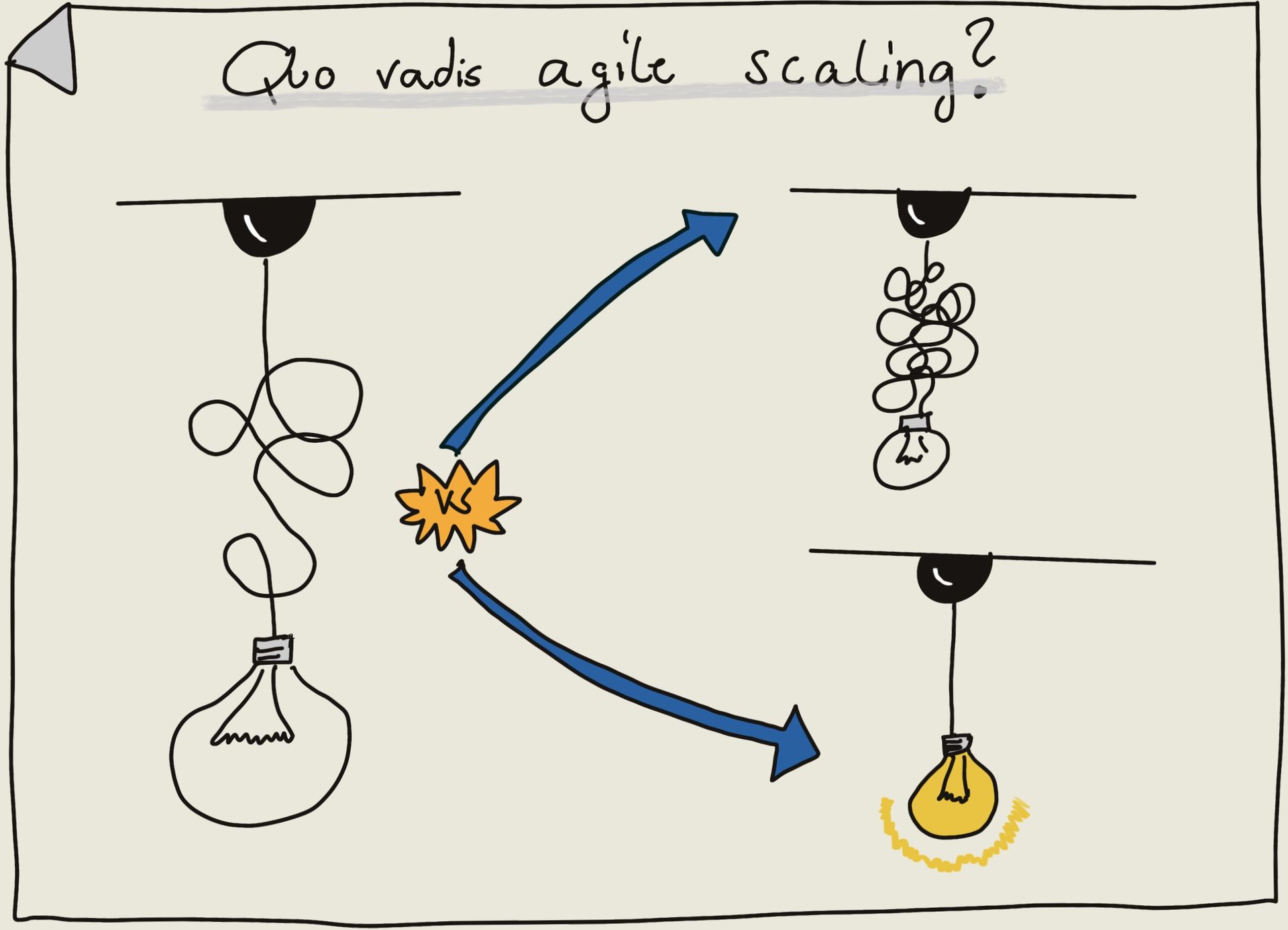
More cheese, more holes
More holes, less cheese
More cheese, less cheese
Is this paradox cheese? Possibly. And is it transferable to the organization of organizations? It is possible.
One thing is certain: to achieve more with less in terms of organisation is not such a far-fetched idea at the latest on second thought. Especially when it comes to scaled agile frameworks, this idea is just too contrary.
Not that this is anything special. Companies, oh no, actually their people, tend to answer additional requirements with more organization. The way from start-up to established company seems to be inevitably accompanied by more organization. More processes, more structures, more rules. In organizational theory, there is a term of references for all these words. Larger and older companies seem to need more references: More employees? More structures. More products? More processes. New events? More rules. Larger projects? More “management”. So if more teams are to be added, if entire divisions, business units or even the whole company is to be “agile”, then we need more references! Yes! Right? Does the organization of the organization also have to grow?
More agility, fewer references
More references, less agility
More agility, more references
Eh? The cat will bite its own tail. And the mouse doesn’t bite off any threads. That would be stupid.
The notion of bureaucracy and hydrocephalus comes to mind. Is greater organization equal to more bureaucracy? The corresponding organizational school (coined by Max Weber) says: joah.
The findings of the last decades, characterized by the organization of knowledge work and learning shows: does not have to.
That’s why we are very keen to tackle transformations under the guiding star of agility. With an agile approach to agile organization. The larger the “agile projects” become, the more we are driven by the idea of escalation. The art is to design the organization in such a way that organizations are simplified, that the focus is on value creation. SAFe has aptly added a tenth principle to the current version 5.0: “Organize around Value“. LeSS is even clearer in this respect and bears the appropriate subtitle: “More with LeSS“.
In concrete terms: How can we achieve the same solutions or visions with fewer rules and fewer roles?
And not unimportant: What can we offer alternatively to people who need rules and roles?
To the first question: How can we achieve the same solutions or visions with fewer rules?
In a hierarchy without binding elements of a role and process model, leaders have to negotiate and decide precisely those roles and processes. “Agile” methods, on the other hand, distribute this leadership in terms of content and process, in Scrum for example to team roles and events. Both are formed by a charter: the Scrum Guide. Or organization-specific adaptations…
In Scrum (about) seven development team members work together with a Product Owner (PO) and a Scrum Master (ScM). A PO and a ScM can work with more than one team. Let us assume with four teams. Experience shows that there are some factors that can influence this ratio towards more teams. So: 4 teams of up to 9 people. Results in 36 persons, with usual leadership spans this is at least 4, rather 5 managers. Well? Is there less leadership in agile? No, on the contrary – according to experience. Now everyone takes over leadership, depending on the situation. This short example shows why it does not make sense to transfer existing structures to a scaled agile organization.
This is a missed opportunity to simplify!
To the second question: What alternative can we offer people who need rules and roles? It is worthwhile to read another article about this – stay tuned 😉 So much in advance: If the new job requires situational leadership, people need combined content and leadership skills. In a team they can develop according to their personal inclination and contribute additional value to the team in their content or leadership competence. As a keyword, the Phi-competence approach should be mentioned.
With these thoughts in mind, in the end it becomes clear that the paradox is none at all. A little bit of rearranging helps:
More references, less agility
More agility, fewer references
Less agility, fewer references
Vincenzo is SAFe Program Consultant, has passed the certification as LeSS-Practitioner with Craig Larman and has advised and accompanied different (de)scaled agile transformations as well as adaptations.

Comments
Write a comment